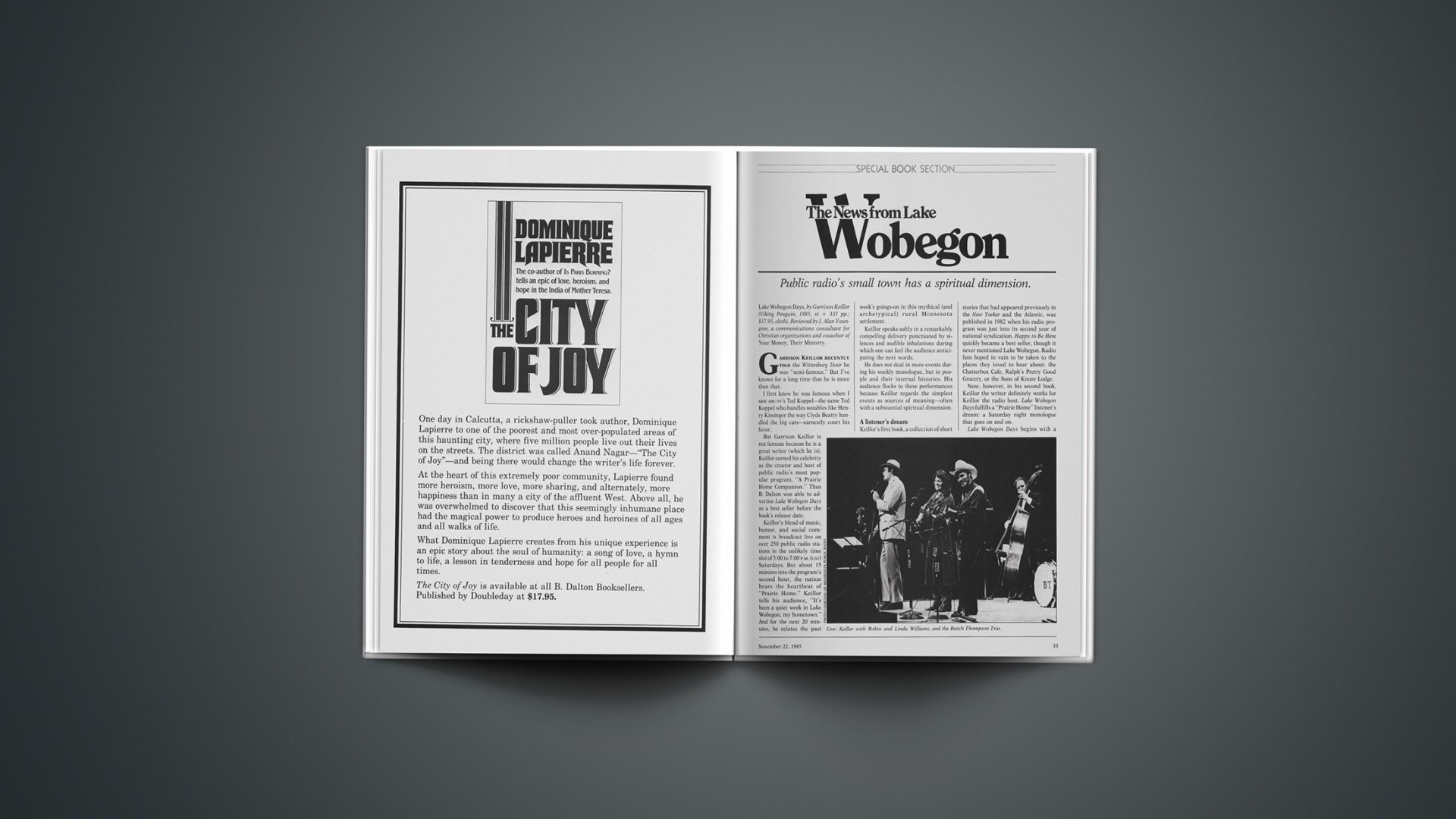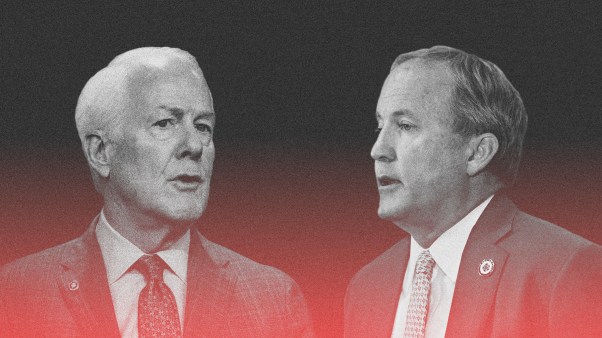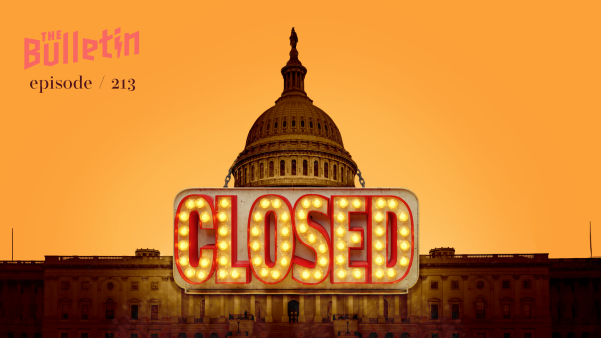Public radio’s small town has a spiritual dimension.
Lake Wobegon Days, by Garrison Keillor (Viking Penguin, 1985, xi + 337 pp.; $17.95, cloth). Reviewed by J. Alan Youngren, a communications consultant for Christian organizations and coauthor of Your Money, Their Ministry.
Garrison Keillor recently told the Wittenburg Door he was “semi-famous.” But I’ve known for a long time that he is more than that.
I first knew he was famous when I saw ABC-TV’s Ted Koppel—the same Ted Koppel who handles notables like Henry Kissinger the way Clyde Beatty handled the big cats—earnestly court his favor.
But Garrison Keillor is not famous because he is a great writer (which he is). Keillor earned his celebrity as the creator and host of public radio’s most popular program, “A Prairie Home Companion.” Thus B. Dalton was able to advertise Lake Wobegon Days as a best seller before the book’s release date.
Keillor’s blend of music, humor, and social comment is broadcast live on over 250 public radio stations in the unlikely time slot of 5:00 to 7:00 P.M. (CST) Saturdays. But about 15 minutes into the program’s second hour, the nation hears the heartbeat of “Prairie Home.” Keillor tells his audience, “It’s been a quiet week in Lake Wobegon, my hometown.” And for the next 20 minutes, he relates the past week’s goings-on in this mythical (and archetypical) rural Minnesota settlement.
Keillor speaks softly in a remarkably compelling delivery punctuated by silences and audible inhalations during which one can feel the audience anticipating the next words.
He does not deal in mere events during his weekly monologue, but in people and their internal histories. His audience flocks to these performances because Keillor regards the simplest events as sources of meaning—often with a substantial spiritual dimension.
A Listener’S Dream
Keillor’s first book, a collection of short stories that had appeared previously in the New Yorker and the Atlantic, was published in 1982 when his radio program was just into its second year of national syndication. Happy to Be Here quickly became a best seller, though it never mentioned Lake Wobegon. Radio fans hoped in vain to be taken to the places they loved to hear about: the Chatterbox Cafe, Ralph’s Pretty Good Grocery, or the Sons of Knute Lodge.
Now, however, in his second book, Keillor the writer definitely works for Keillor the radio host. Lake Wobegon Days fulfills a “Prairie Home” listener’s dream: a Saturday night monologue that goes on and on.
Lake Wobegon Days begins with a warm-up chapter: Lake Wobegon today, and a glimpse of Keillor’s childhood.
Then, Keillor conjures up the history of the town: Lake Wobegon was settled by Unitarian missionaries. Their leader, Priscilla Alcott of Boston, was called of Providence to bring Christianity to the Indians through interpretative dance. This little shtick serves as a soup course for a couple of short but sweet send-ups of liberal theology that appear later in the book. The Boston folk even build a college, all the time calling the town New Albion.
After the historical chapters, we get into vintage monologue material skillfully woven into a continuing saga of farmers resisting modernity, regulars at the Sidetrack Tap, and the annual revival meetings held by Brother Bob and Sister Verna of the World-Wide Field of Harvest Ministry of Lincoln, Nebraska. Keillor’s people react in ways we know we might to circumstances we all recognize. In them, we see ourselves as others see us.
Keillor’s oral style is relaxed, unhurriedly gracious. His writing shares this atmosphere, meandering from subject to subject with that sort of homey comfort with which one would naturally move between tales of home and school and church. At the end of each tale another begins. Like life. Keillor creates the life of a village in the way we might relive it before the fireplace. Chapter headings are little more than a concession to convention.
Economy and simplicity characterize Keillor’s writing: not economy for economy’s sake (as if he were Minnesota’s Hemingway), but an economy that signals a homespun lack of pretension and yields a simple power of expression.
Separated But Secure
“Prairie Home” observers wonder how Keillor gets away with such explicitly God-oriented material on public radio and in this new book.
One week nearly two years ago he spent almost the entire 20 minutes on the love of God. More often, the subject is mundane. But certainly, Garrison Keillor is making Judeo-Christian values, a Christian world view, and the pursuit of the spiritual dimension of life more credible and interesting than almost anyone in the public eye today.
When the Wittenburg Door asked Keillor how he felt about his fundamentalist upbringing, he replied: “Different. Conspicuously different.… But I also felt very secure. We were so separated from the world with our restrictions and discipline that it encouraged us to have a greater love for each other.…”
Many listeners whose evangelical backgrounds have made them feel like outsiders identify with Keillor. When he created Lake Wobegon, Minnesota, Keillor made it half Norwegian Lutheran and half German Catholic—almost. Young Garrison and 16 others, all relatives, are portrayed as Sanctified Brethren, a group not unlike the Plymouth Brethren among whom he was actually reared in Anoka, a Minneapolis suburb.
The fictionalized Keillor dearly wants to join with the Lake Wobegon Catholics, especially on the feast day of Saint Francis when Father Emil of Our Lady of Perpetual Responsibility blesses the animals. When the Lake Wobegon Catholics go public with their pageantry on that day, they really show their numbers. To the boy Keillor they represent an institution others won’t ridicule, something big enough to belong to.
And when Keillor goes off to university and makes Catholic friends—named Franz Josef and Maria Theresa, no less—he tells them how much he wants to be part of the blessing of the animals. Ironically, they in turn deny their heritage. “Oh, that’s part of the immigrant church,” they say. “We never do that here at the Newman Club.”
Separatist Christianity creates a tension between feelings of isolation and security. Believers may be in anguish because they are fundamentally unlike their companions at school or work. But believers are also comforted by the close-knit kinship of faith and the sense of assurance that comes from knowing the truth. The comfort makes it possible for Keillor to appreciate his fundamentalist heritage while he anesthetizes the pain of separation through humor.
Although Keillor claims to be born again, he does not regularly attend church services. Why? Being “semi-famous,” Keillor “felt conspicuous” going to church. Thus the tension continues in his adult life. Whereas his religion made him feel conspicuous in the larger society when he was a youth, his worldly celebrity now makes him feel conspicuous among the religious.
Evangelical author Joseph Bayly has followed Keillor’s career with interest since 1979 when he received a letter from Keillor commenting on a column Bayly wrote for Eternity (in which he quoted Keillor from the New Yorker). Bayly suspects that intellectuals and media heads may be looking to Keillor for the sort of interpretation of the evangelical experience in America that Isaac B. Singer and Chaim Potok have provided of the Jewish experience.
American Humorist
The bespectacled Keillor is fundamentally an American humorist. Not all his humor comes out of his Lake Wobegonish past or his religious experience. Some of the best is current social comment. Years before many metropolitan public radio stations carried “Prairie Home,” I was driving with the radio on when a man began reading a memorandum from a school principal describing in detail which traditional Christmas activities would be permissible that year. It was Keillor, sending up the ACLU mentality on religion’s place in American life.
More recently, Keillor contended that Ted Turner’s attempted takeover of CBS would fail and that he, Keillor, would instead take over the network and move it to Columbia, Missouri—just to offset the New York and Los Angeles influences. He and his finance man, Fred, had met for coffee that morning and put together a package. Keillor had learned that you need hardly any of your own money in these deals. Matching Turner’s cheeky style, he admitted: “I’ve got only two hundred bucks in this thing.”
To Keillor’s followers, “Prairie Home” is more than entertainment—it is a group experience. That is why they place so much importance on being part of the live broadcast—whether in the studio or at home.
Chicago’s WBEZ, knowing that the program’s devotees were its main source of pledge money, wanted to make the program more convenient, and delayed the broadcast one hour. But the fans made it clear—“We want it live!”
Genuine, current, and nostalgic, Garrison Keillor is a writer of the people: a Mark Twain without the bitter aftertaste. Thus, whether for the promise of a significant insight, a moment of recognition, or the chance to hear a polka again, millions of Americans put aside whatever they’re doing for two hours each week to hear what life is really about from Garrison Keillor.
An Excerpt
“Lake Wobegon people die in … hospitals [thirty-some miles away], unless they are quick about it; and their relations drive to sit with them. When Grandma died she had been unconscious for three days. She was baking bread at Aunt Flo’s and felt tired, then lay down for a nap and didn’t wake up. An ambulance took her to the hospital. She lay asleep, so pale, so thin. It was August. We held cool washcloths to her forehead and moistened her lips with ice cubes. A nun leaned over and said in her ear, ‘Do you love Jesus?’ We thought this might lead to something Catholic, involving incense and candles; we told her that, yes, she did love Jesus. Eight of us sat around the bed that first afternoon, taking turns holding Grandma’s hand so that if she had any sensation, it would be one of love. Four more came that evening. We talked in whispers, but didn’t talk much; it was hard to know what to say. ‘Mother always said she wanted to go in her sleep,’ my mother said. ‘She didn’t want to linger.’ I felt that we should be saying profound things about Grandma’s life and what it had meant to each of us, but I didn’t know how to say that we should. My uncles were uneasy. The women saw to Grandma and wept a little now and then, a few friendly tears; the men only sat and crossed and uncrossed their legs, slowly perishing of profound truth, until they began to whisper among themselves—I heard gas mileage mentioned, and a new combine—and then they resumed their normal voices. ‘I wouldn’t drive a Fairlane if you give it to me for nothing,’ Uncle Frank said. ‘They are nothing but grief.’ At the time (twenty), I thought they were crude and heartless, but now that I know myself a little better, I can forgive them for wanting to get back onto familiar ground. Sumus quod sumus. [We are what we are.] She was eighty-two. Her life was in all of us in the room. Nobody needed to be told that, except me, and now I’ve told myself.”
Who Sent The Message?
Grammatical Man: Information, Entropy, Language, and Life, by Jeremy Campbell (Simon & Schuster, 1982, 319 pp.; $9.95, paper), reviewed by Virginia Stem Owens, author of And the Trees Clap Their Hands: Faith, Perception, and the New Physics.
Entropy is the bad news of classical physics. As propounded in the second law of thermodynamics, entropy is that state of muddle toward which all physical systems inevitably slide. Clumps of exploding gases we call stars will eventually burn to cinders, and even gravity and the “strong force” holding atomic nuclei together will dissipate. With its energy evenly distributed, the ultimate state of the universe will be a uniform, homogeneous goo.
At least this is the sad story science has been telling us for a couple of centuries, and it has cast a pall over the imagination of the Western world with its grim determinism.
But as journalist Jeremy Campbell records in Grammatical Man, the tide began to turn around 1948 when Claude Shannon, working for Bell Telephone Laboratories, introduced to the world a new concept called “information theory,” a concept that, among other things, enabled biologists Crick and Watson only five years later to unravel the intricacies of DNA’s double helix by understanding it as an information system.
Before Shannon, science had been concerned with only two entities—matter and energy. Now the two were shown to be incomplete without a third—information. Now, only a few decades later, information (along with its communication) has become one of our primary cultural values, attaining almost to a spirituality of its own.
Shannon’s work began with the same questions that have always generated fresh insights into reality: How are order and disorder related? Why is there something rather than nothing? Since the most statistically probable state of the cosmos is chaos, how did any structure ever arise from undifferentiated energy? If the second law of thermodynamics is absolute, we are living in a theoretically impossible world.
Noise
In exploring this conundrum, Shannon investigated how a message can persist in the midst of haphazard disorder or “noise.” How, for example, can the ear distinguish the sound of a conversation from the other noises also assaulting it and then integrate words and phrases into a meaningful message? How can your eye do the same thing with the print you are now reading?
He discovered the answer in the critical balance achieved between two factors: redundancy and uncertainty.
The structure of language is redundant and repetitive. We expect words to come in certain sequences in a sentence, not at random. Our vocabulary does not consist of 26 letters randomly distributed into groups we call words; instead, they appear in predictable clusters according to contexts. For example, we can predict the occurrence of a good many more e’s than g’s or z’s. Repetition is an information system’s protection against error.
But just as necessary is uncertainty. If you were completely able to predict what I was going to say next, there would be no point in my saying it. The very certainty would make the message worthless.
The human mind must have a certain degree of order to work with; it cannot comprehend pure chaos. Presented with random figures—say, cloud formations or ink blots—the brain will immediately set to work imposing order on them, imagining they look like umbrellas or elephants. But the brain must also have a certain looseness to work with, some uncertainty, some unexpectedness, or it shuts down altogether. Too much predictability, like a dripping faucet, becomes unbearable.
Improbable Odds
Campbell does a fine job of presenting not only Shannon’s information theory but its implications for other branches of science. Perhaps the most fascinating aspect of the book is the way he traces the history of the idea of information. His afterword on “Aristotle and DNA,” for example, locates the root of information theory where almost every physical and metaphysical concept of the Western world is grounded—in the early Greeks.
Campbell falters, however, when it comes to considering the most fundamental implications of information theory. Biologists are currently using it to explain how, despite improbable odds, organisms ever appeared in an entropic universe. Yet one of the questions left glaringly unasked is: If there are indeed codes, such as DNA, embedded in the universe, where did the message come from? Surely information presumes an informer; and a message, a sender. Otherwise, we had better find some other vocabulary to describe what is going on here.
Ilya Prigogine, a Nobel laureate in chemistry, specializes in thermodynamic systems he now calls “self-organizing,” a term that is growing in popularity in several sciences. But what is the origin of this mysterious self? It seems that scientists are not paying enough attention to their own language. Even Campbell can speak without a blush of “nature at her most inventive,” an unexamined mythological epithet.
Still, the value of the book should not be disparaged simply because it was not written out of a Christian cosmology. (If we wait for that, we shall have precious few works of this ilk to read.) Campbell presents his material so that one is not only free, but stimulated to ask one’s own questions. How do our own lives emerge out of the balance between choice and constraint? How is probability related to providence? When do events become history—a message—rather than entropy—random sequence? Information theory may provide us with a new way of understanding how being human entails both freedom and necessity, not only biologically, but spiritually.
And it might also goad us to consider our own assumptions about the message entrusted to Christians. Can the good news overcome the bad news of entropy? Not, certainly, through sheer mechanical repetition. Redundancy is essential to the reliability of a message, but that is only half the task. The other half is freedom. To be good news, the gospel must be new, even to those who have heard it all their lives. Indeed, we have all experienced the freshening of a well-worn text when a phrase suddenly unfurls a whole new dimension of its nature. What makes it new is the context of that moment. The human situation is endlessly rich. Just as out of a finite number of words in the English vocabulary an infinite variety of sentences can be generated, so out of the unique arrangement of events that make up a person’s life, a message emerges, a message necessarily new and unexpected.
The Word of God is living, and therefore unpredictable. His evangel invades our own small histories and saves them from entropy, delivering them from determinism into its own unexpectedness. And we become bodily incorporated into its message; or, as George Macdonald put it, “The long tale of us God to himself doth say.”
An Astronomical Pilgrimage
The Soul of the Night, by Chet Raymo (Prentice-Hall, 1985, 208 pp.; $15.95, cloth). Reviewed by Dennis Chamberland, a nuclear engineer and former science editor for Oklahoma Public Radio.
There are two ways to look at the universe—the physical and the spiritual. Many Christians accommodate both by keeping them distinct and separate. Others cannot. Astrophysicist Chet Raymo of Stonehill College does not want them separate. “The night sky is the hunting ground of the mystic and the philosopher, the scientist and the theologian,” he says. Although God is mere metaphor for Raymo, he looks for spiritual meaning in the physical vastness of the universe. He seeks the soul of the night.
Wonder
Raymo’s book is about wonder. It is well nigh impossible for the reader not to share his awe of the universe. Yet the Christian reader walks alone through The Soul of the Night, keeping a skeptical eye on the author. As the reader wanders open-mouthed at the incredible complexity of God’s handiwork, Raymo stops occasionally to express his detachment from religion and to applaud modern physics as a vastly improved set of explanations over traditional beliefs in a God-created universe.
An Excerpt
The Silence
“Yesterday on Boston Common I saw a young man on a skateboard collide with a child. The skateboarder was racing down the promenade and smashed into the child with full force.… The child’s body simply lifted up into the air and, in slow motion, as if in a dream, floated above the promenade, bounced twice like a rubber ball, and lay still.
How are we to understand the silence of the universe?… Beyond the Earth’s skin of air the sky is silent. There are no voices in the burning bush of the Galaxy.… Millions of solar systems are sucked into black holes at the centers of the galaxies; they fall like feathers. The universe fattens and swells in a Big Bang, a fireball of Creation exploding from a pinprick of infinite energy, the ultimate firecracker; there is no soundtrack.…
In Catholic churches between Good Friday and Easter Eve the bells are stilled.… Wooden clackers … remind the faithful of the terrifying sounds that were presumed to have accompanied the death of Christ. It was unthinkable that a god should die and the heavens remain silent.… The Earth quaked and rocks split. Stars boomed in their courses.…
Yesterday on Boston Common a child flew through the air, and there was no protest from the sky. I listened. I turned the volume of my indignation all the way up, and I heard nothing.”
Raymo admits that the probability of the universe existing at all from chance molecular encounters following the Big Bang is one in 1,000,000,000,000,000. Yet, Raymo rationalizes:
“There are those who will applaud this information and say ‘Ah, you see, the physicist has proved that God exists.’ And I say ‘No such thing’; the physicist has proved nothing. He only observes that this wildly improbable universe exists and it is the only universe that we could possibly observe. If that is a mystery that holds us in awe, then so be it … but I will not for a moment assume that the language of my forefathers encompasses this new knowledge of the infinite.… What the physicist has learned enriches and deepens those venerable mysteries; it neither proves them or negates them.”
Though Raymo frequently broaches the topic of God, alternately invoking him and abandoning him, he does it without malice, almost as an innocent plea for God to show himself.
And so Raymo walks the line, neither acknowledging nor denying God’s participation. Throughout The Soul of the Night, he uses God as a metaphor in order to deepen the beauty of his prose and heighten the sense of profound emotion that the nightly vision of the universe should elicit from us all.
Raymo likens his early belief in God to a plover, a shore bird that inhabits his New England beaches. Says Raymo:
“My lapse of faith occurred not long after my graduation from college, at the end of a period of intense belief during which His face seemed palpably near.… I turned to my science books and got on with the business of life. But something was missing—‘The thing with feathers.’ In God’s absence I have tried to make a sort of theology of ornithology.… But the sacred plover continues to reside in the uplands with the wind and the rain, and something deep inside me knows that it is gone forever.”
But even Raymo acknowledges the risk of this metaphoric association: “Only a daredevil makes metaphors. To make a metaphor is to walk a tightrope, to be shot out of a cannon, to do aerial somersaults without a net. The trouble with metaphors is that you never know when they’ll let you down. You turn a somersault in mid-air, you reach for the trapeze, and suddenly it isn’t there.”
How ironic, from the Christian perspective, that Raymo should fall victim to his own intimation.
There is no deceit in Raymo’s approach. His view of the universe is not Christian, but neither is it atheist, agnostic, or pantheist. He seems to run from labels. His devotion to Thoreau’s detachment from materialism manifests itself in his aversion to the “baggage” of responsibility that accompanies organized philosophy. Thus the book is refreshingly guileless, clearly defining the author’s philosophy but leaving readers a place of their own. Believers can read it without feelings of rejection, anger, or intimidation.
A Thing Of Beauty
After Raymo’s approach is understood, The Soul of the Night emerges as a rich, uncluttered thing of beauty, delighting the senses and teasing the limits of the mind to comprehend the magnificent splendor and scope of creation.
On this astronomical pilgrimage, Raymo tells of an awful star-eating beast at the center of our own galaxy that has devoured one hundred million suns and their planets, perhaps much like our own: “The monster at the heart of the Milky Way deepens and darkens night and casts upon the constellation a spell of magic.”
Readers are allowed to celebrate the universe as they are guided through the silent, patchy, near empty darkness sprinkled with the dusty glow of a trillion suns and the muted colors of infinitesimal pinpoints of light.
The size and power of the universe defy words. But Raymo has managed to load his precise but surprisingly literate style with sensitive and compelling emotion. And Michael McCurdy’s brooding wood engravings convey what words cannot.
Raymo speaks of chance encounters in physics, incredible coincidences that have produced the universe. Perhaps he himself is such a remarkable coincidence: The wedding of astrophysics with a personal appreciation for literature, art, and nature is not the norm in science literature.
For those accustomed to the sterile language of science accompanied by computer-enhanced photographs from the outer reaches of the solar system, Raymo’s book is a breath as sharp and clean as the New England sky that inspired its birth. The Soul of the Night will almost certainly emerge as a classic in astronomy, as Silent Spring is in environmental science.
Watchtower World View
Apocalypse Delayed: The Story of Jehovah’s Witnesses, by M. James Penton (University of Toronto Press, 1985, xvii + 400 pp.; $24.95, cloth). Reviewed by Marvin Millis, who writes from Vancouver, British Columbia, Canada.
“I believe” wrote Carl Sagan, “we should understand the world views from which differing religions derive and seek to understand what human needs are fulfilled by those differences.” M. James Penton, professor of history and religious studies at Lethbridge University, now reveals the derivations of the world view of Jehovah’s Witnesses as never before.
As a loyal Witness, Penton produced a study of the movement in Canada, promoting the group as “champions of freedom of speech and worship” (1976). Then, in 1981, came his much-publicized excommunication. Hence, in his current work, he has taken a more candid view of Watch Tower history, admitting that, while the Witnesses are a much persecuted minority, there is corruption and scholastic dishonesty within the walls.
In keeping with the scholarly approach of his book, Penton strives for objectivity. Hence, tales that some Witness critics retell about C. T. Russell (who founded Zion’s Watchtower Tract Society after a schism with associates) are brought into question. But the original sources of his doctrine and exegesis are not brought to light. Curiously, Penton concludes that Russell was sincerely self-deceived in accepting and promoting the date settings of his mentors.
J. F. Rutherford, the society’s second president and a veritable dictator, became an ambitious theocracy builder with himself as its leading earthly representative. Penton describes his successful takeover bid in which he revamped most of Russell’s eschatology; explains how Russell’s major apocalyptic date—1914—was given new status; and recounts the belief that 1925 would commence the resurrection of “the ancient worthies.”
This study discloses Rutherford’s luxurious living, his problems with alcohol, his estrangement from his wife, and his loss of a $50,000 lawsuit brought by an expelled member. Penton supplements the account of his attacks on ‘religion’ with select cartoons from official literature. Most shocking is the documentation of his attempt to placate Hitler by professing loyalty to the principles of the Third Reich.
Under the next administration—“a close-knit band whose most outstanding qualities were administrative ability”—began an era of global expansion and rapid growth during which apocalyptic date setting was abandoned, until the mid-sixties. Then, when a 1975 target date for the start of the millenial kingdom passed, a period of dissent and significant membership loss began.
Penton’s unique position—a well-traveled, fourth-generation member who served in various capacities—makes him a reliable informant. He aptly gives insight into major doctrines, past and recent prophetic speculation, the authority structure of the Witness organization, and the harshness of the total ban upon those who attempt open discussion of any differing exegetical view.
Canterbury Tales
Evangelicals on the Canterbury Trail, by Robert Webber (Word, 1985, 174 pp.; $12.95, cloth). Reviewed by Dan E. Nicholas, director of community relations for Reno (Nev.) Professional Counseling Center, and a member of the Evangelical Orthodox Church.
Wheaton theology professor Robert Webber has taken a back seat as editor for at least half of his new book. Five chapters are written by six defectors from nonliturgical and Bible church traditions to the Episcopal church.
These spiritual travelers, old and young, tell of their pilgrimage to liturgy and the sacraments. They speak honestly about their struggles and the price they have had to pay in their decisions to become Episcopalians.
Liturgy has been, until recently, a foreign tongue to all of these writers. A partial list of their backgrounds is sure to evoke curiosity: Bob Jones University, Wheaton College, Prairie Bible Institute, Moody Bible Institute, Gordon College, Campus Crusade for Christ, and several different independent and Bible church traditions.
Webber opens with six chapters on his own journey, explaining how an emptiness within kept him longing for mystery in worship—a desire for sacramental reality. He speaks of his evangelical amnesia, his discovery of the whole church through the ages, his inner need for a holistic spirituality that acknowledges the sacramentality of the physical.
Missing Chapter
There is something obviously missing from this book: the chapter written by Thomas Howard, the evangelical turned Anglican who strongly influenced several of these writers. When Howard converted to Roman Catholicism just months ago, the publisher was obliged to pull his chapter.
This raises a disturbing question: Is Anglicanism’s Canterbury really home for these seven writers? Or is it merely a rest stop down the historic trail to Orthodoxy’s Constantinople or papal Rome?
Webber’s other books are aimed at leaders and serious students. Canterbury Trail, however, is table talk that tells with first-person stories why many formerly nonliturgical and even anti-liturgical evangelicals are willing to endure strained relationships with family and friends in choosing the warm embrace of “the smells and bells” of eucharistic worship: incense, icons, the sign of the cross, kneeling, confession, and chant. Here is the kind of anecdotal fare that moves a book beyond the scholastic interests of walnut-desked theologians into the world of the lay reader.
Book Briefs
Spirited Sermons
Those Preachin’ Women: Sermons by Black Women Preachers, Ella Pearson Mitchell, editor (Judson, 1985, 126 pp.; $7.95, paper).
After telling of the souls who have come to Christ through her preaching, editor Ella Pearson Mitchell of Virginia Union University writes: “God said that he would pour out his Spirit on all flesh, and he has dumped the bucket on a whole lot of women a whole lot of times.”
Sermons from 14 black women illustrate Professor Mitchell’s thesis. Some of them sound academic. Others ring with the cadences of the living, worshiping black community. Some are tinged with the flavor of liberation theology, but it is a seasoning in the stew rather than the substance of the whole dish.
All of them make good resources for preachers and challenging devotional reading for ordinary Christians. Reading these sermons will put white readers into the pew next to black men and women, and help them hear the gospel with different ears.
J. B. Phillips’s Warning
The Price of Success: An Autobiography, by J. B. Phillips (Harold Shaw, 1984, 222 pp.; $7.95, paper).
In 1941 J. B. Phillips began translating the letters of Paul into modern English for the benefit of the youth club in his bombed-out parish in Southeast London. The epistles were written to Christians in danger, he reckoned, and his parish certainly qualified.
The translation of the New Testament that grew from those early efforts brought the Reverend Mr. Phillips a great deal of fame and many opportunities.
“I was well aware of the dangers of sudden wealth and I took some severe measures to make sure that, although comfortable, I should never be rich,” Phillips wrote. “I was not nearly so aware of the dangers of success. The subtle corrosion of character, the unconscious changing of values and the secret monstrous growth of a vastly inflated idea of myself seeped slowly into me.”
Phillips’s “one man kingdom of power and glory” stopped in the early 1960s when, exhausted, he entered a severe depression. It is difficult to tell from Phillips’s own account whether he ever completely recovered from his breakdown. This moving book was his last writing and a warning to church leaders of the price of success.
No-nonsense Chastity
The Courage to be Chaste, by Benedict J. Groeschel, O.F.M.Cap. (Paulist, 1985, viii + 114 pp.; $3.95, paper).
Father Groeschel talks to single people who have a moral obligation to live a life of chastity—priests and nuns, adults with no prospect of marriage, homosexuals. He gives them no out. Unmarried Christians are called to celibacy. Period. But he does give them wise advice, strongly put: “Many lonely people fail to realize that friendships have to be cared for and cultivated like plants in a garden. If you think you should be loved just because you are you, you missed your vocation. You should have been God.”
Groeschel does not speak an evangelical’s lingo. He relies on official Catholic teaching rather than biblical revelation to make his case for chastity. But it will warm many evangelical hearts—and even give them courage—to hear this man talk tough. As a psychologist, he understands human behavior. But as a Christian he knows God expects purity—and provides the strength to muddle through.
Study Aids
The Land of the Bible and Public Life in Bible Times, edited by Packer, Tenney, and White (Thomas Nelson, 1985, 170 pp. & 168 pp.; $6.95 each).
What are coneys? The Land of the Bible can help you identify this animal, and also insects, gems, and herbs (such as spikenard) mentioned in Scripture. Public Life in Bible Times addresses trade, transportation, and tools for starters. There is even half a page on catapults. (They sometimes used mule gut to create the tension.) Adapted from The Bible Almanac, these handbooks are convenient for personal or family use.










